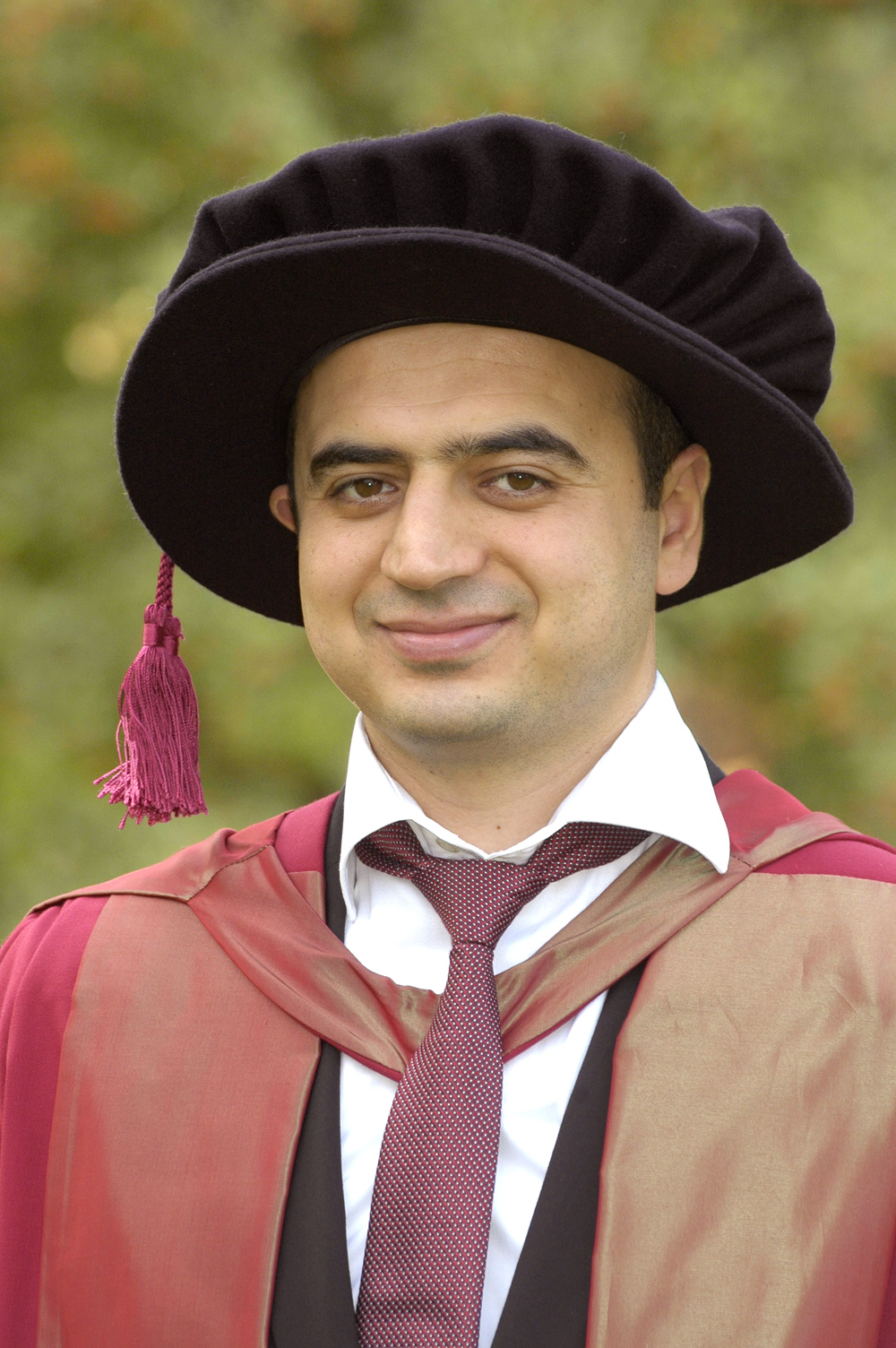Modelling of Acoustic Pressure in Bubbly Liquids with Application to Sonochemical Reactors
Hakan Dogan passed his PhD viva at the Wessex Institute of Technology, with his thesis entitled ‘Modelling of Acoustic Pressure in Bubbly Liquids with Application to Sonochemical Reactors’. His external examiner was Prof Luis Godinho from the University of Coimbra, Portugal and the internal examiner was Dr Stavros Syngellakis.
‘Modelling of Acoustic Pressure in Bubbly Liquids with Application to Sonochemical Reactors’. His external examiner was Prof Luis Godinho from the University of Coimbra, Portugal and the internal examiner was Dr Stavros Syngellakis.
Hakan Dogan graduated from Bagazici Universitesi, Istanbul with a Bachelor of Science in Mechanical Engineering, followed by a Master of Science Degree at Koc University, Turkey. He started his PhD programme at WIT in 2010 under the supervision of Prof Viktor Popov.
Hakan’s research was funded by the European FP7-SONO project, with the aim of developing a pilot sonochemical plant in order to produce antibacterial medical textile fabrics by coating of the textile with ZnO or CuO nanoparticles. The findings of this research were expected to aid the design procedures and also to provide a better understanding of the microscale physical and chemical events.
Propagation of acoustic pressure waves in a bubbly liquid was modelled in this thesis by using the Helmholtz equation. Computational models were developed based on meshless approaches, i.e. radial basis integral equation (RBIE) and local boundary integral equation (LBIE) methods. A major part of the research focused on improving the efficiency and the accuracy of the developed methods. For this purpose, numerical tests were carried out using several example problems in order to verify the applicability of the methods. As a result of these tests, the optimal parameters which should be used to minimize the numerical error were suggested. Further strategies were proposed in order to handle the thin inclusions, such as textile fabric, in the domain.
The wave propagation in bubbly liquids involved coupled effects of the sound field and bubble population field, such as dissipation of the acoustic energy by bubble oscillations. The problem was therefore non-homogeneous due to the presence of bubbles and nonlinear due to coupled effects. Examples of both linear and nonlinear wave propagation were solved in this study. Results related to a 3D sonoreactor including textile fabric were also presented. Effects of bubble size distribution and bubble volume fraction on the acoustic wave propagation were discussed in the example problems.
Both examiners congratulated Hakan on the work presented and recommended that he be awarded the degree of Doctor of Philosophy.

 Wessex Institute
Wessex Institute